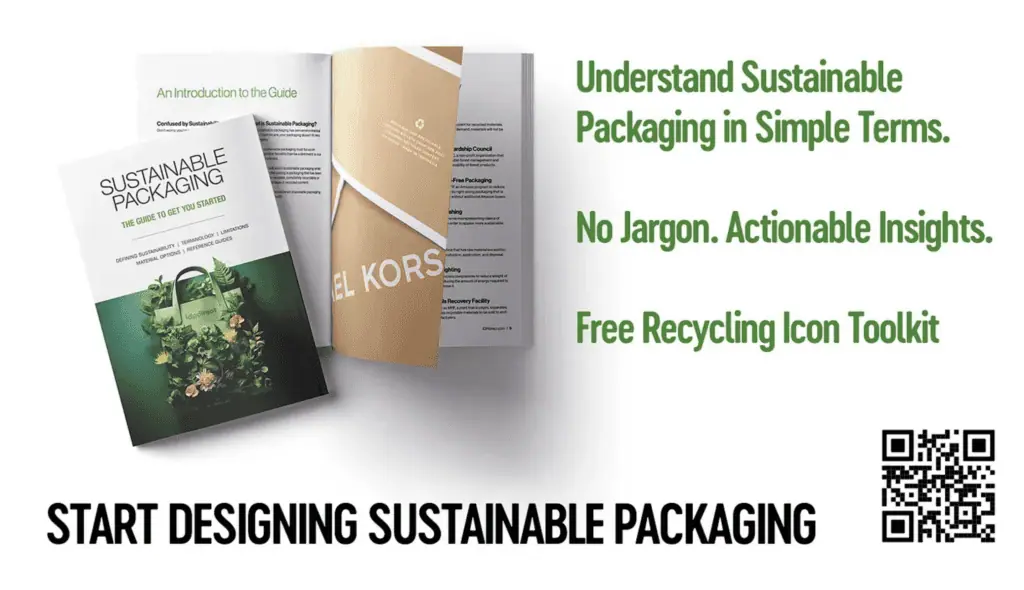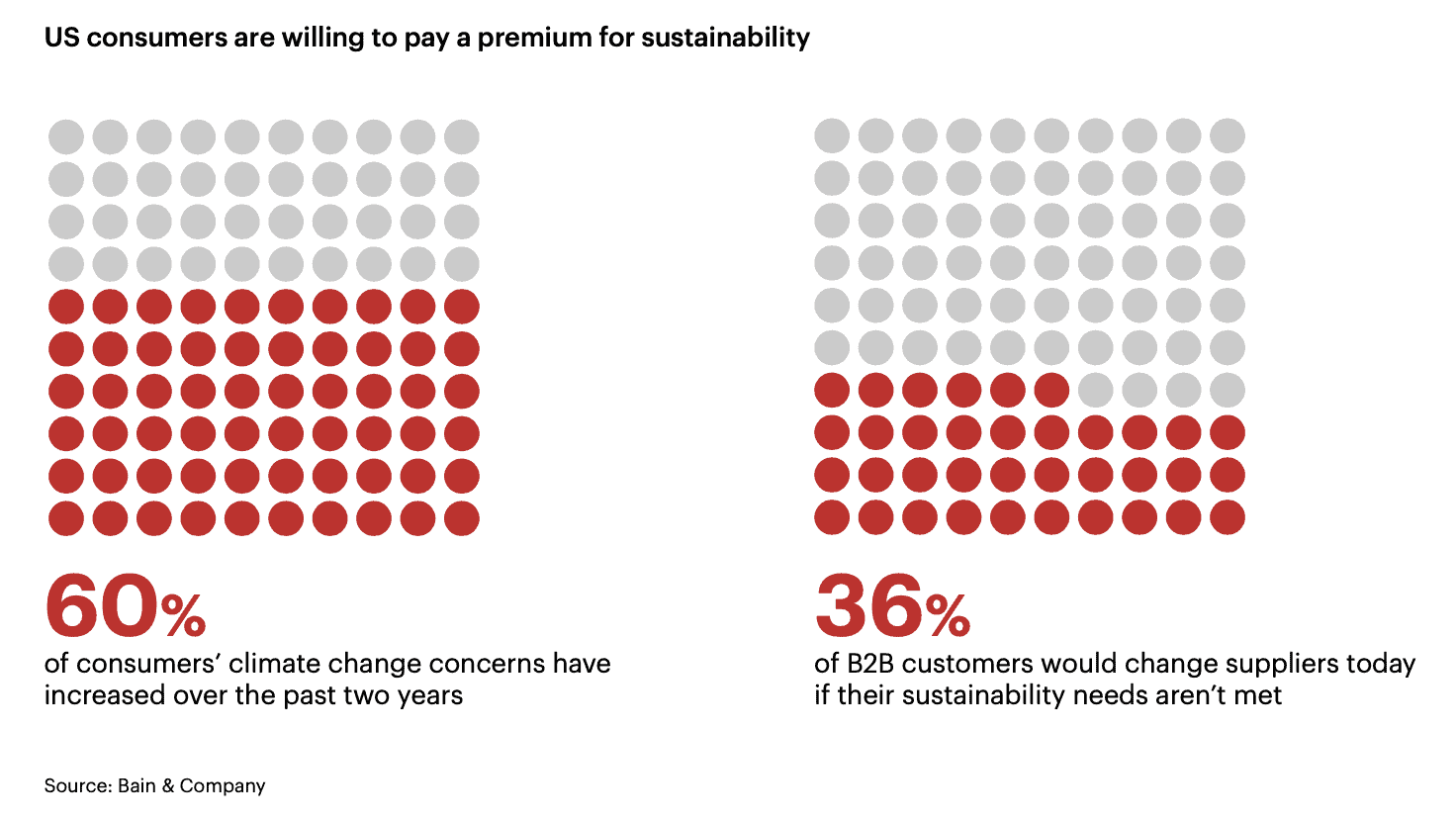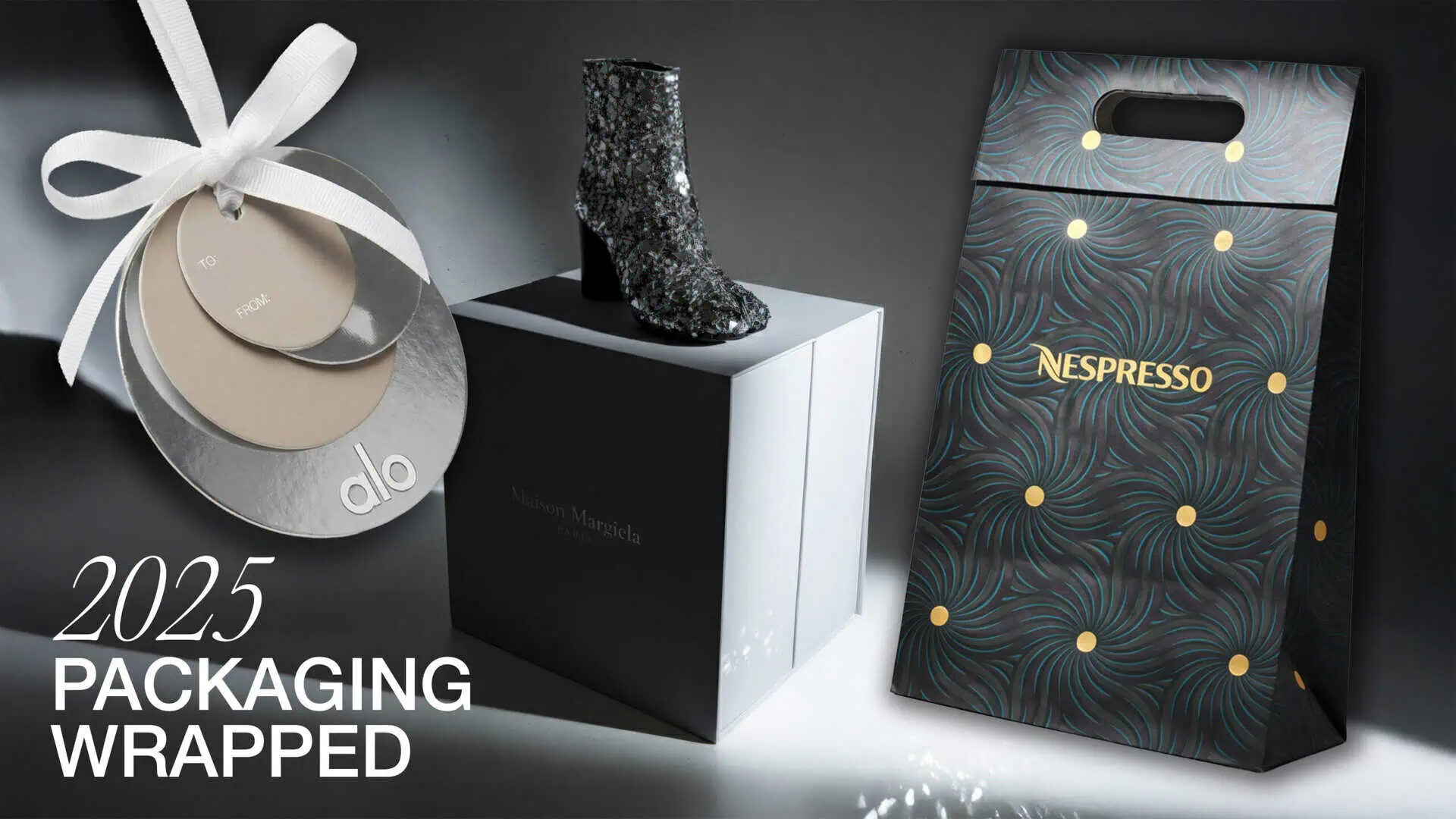Author
Sustainability Analyst
Published
September 16th, 2024
Length
6 Minutes
As 2024 unfolds, the conversation around sustainability is shifting from ambitious commitments to a more pragmatic approach. Bain & Company’s latest report, “The Visionary CEO’s Guide to Sustainability 2024”, provides insight into how companies are adjusting their sustainability strategies to meet the realities of today’s business landscape. With economic headwinds like inflation, rapid technological advancements, and growing geopolitical instability, many companies are beginning to deprioritize sustainability in favor of short-term concerns.
Yet, this is a critical moment for brands. According to Bain’s findings, sustainability is still top of mind for consumers and B2B buyers alike, and neglecting it can result in missed opportunities and lost market share. In fact, 36% of B2B buyers stated they would switch suppliers that fail to meet sustainability standards, while 60% of global consumers are increasingly concerned about climate change. This is a powerful indicator that sustainability is not just a trend; it’s a demand that will shape the future of business.
The short answer in should you rethink sustainability today is yes, you should rethink it and double-down. Now is the time to make investments in sustainable packaging.
5 Key Takeaways
1. Sustainability’s Pragmatic Turn:
Many companies are rethinking their ambitious sustainability goals as they face realities like inflation, AI disruptions, and geopolitical uncertainty.
2. Consumer and B2B Pressure Remains:
60% of consumers are more concerned about climate change than two years ago, and 36% of B2B buyers are willing to switch suppliers that fail to meet sustainability expectations.
3. Refining Sustainability Strategies:
Companies are advised to refine their sustainability focus, emphasizing specific, achievable goals such as sustainable packaging or circularity over broad, sweeping commitments.
4. Collaboration is Key:
Achieving sustainability goals requires deeper collaboration across the supply chain, especially since many carbon emissions and sustainability challenges occur outside a company’s direct control.
5. Tailoring Sustainability to Consumer Needs:
Businesses should customize sustainability messaging based on consumer and market priorities, highlighting actionable areas like recyclable packaging or ethical sourcing.
The Pragmatic Shift in Sustainability
Bain’s report explains that many companies are emerging from the initial hype phase of sustainable packaging and realizing that their ambitious goals are harder to achieve than expected. This does not mean abandoning sustainability; rather, companies are urged to refine their targets, set more achievable milestones, and focus on the areas where they can make a meaningful impact.
Jean-Charles van den Branden, leader of Bain’s global sustainability practice, highlights this shift, stating: “Building a sustainable business remains a strategic imperative. Customers, consumers, and regulators are demanding it.” However, instead of broad and often vague commitments to sustainability, Bain’s experts recommend a tailored approach—one that identifies the most critical areas for each brand’s product and market.
For example, the report points out that “sustainability” is too broad a concept for consumers. Businesses need to understand their customers’ specific sustainability priorities, whether that’s sustainable packaging, product circularity, or ethical sourcing. The key is to focus on relevant, tangible changes that align with both the company’s capabilities and consumer expectations.
Actionable Insights for Brands
1. Reevaluate Sustainability Goals: The reality is that some of the earlier goals set by companies may not be achievable in the current business environment. Now is the time to reassess those objectives. Focus on feasible, relevant targets that can be measured and met. For example, instead of pledging 100% carbon neutrality, companies can aim for significant, incremental reductions in carbon emissions or focus on making their packaging fully recyclable.
2. Prioritize Consumer-Specific Sustainability: Not all consumers care about sustainability in the same way. Some markets prioritize recyclable packaging, while others care more about product origins and animal welfare. Conduct market-specific research to identify what your consumers care about most and tailor your sustainability messaging accordingly. If sustainable packaging is the top concern, invest in sustainable materials and clearly communicate these efforts to your audience.
3. Capitalize on Packaging Trends: Bain’s report highlights that sustainable packaging remains a key focus for consumers. Packaging represents a tangible, visual touchpoint for sustainability. Brands should consider alternative materials like agricultural waste or non-forest fibers, and ensure that recyclability is central to their design process. This can lead to stronger consumer trust and loyalty.
4. Collaborate Up and Down the Supply Chain: Sustainability challenges, particularly when it comes to carbon emissions, are often dispersed throughout the supply chain. Companies that collaborate with their suppliers and even competitors to innovate and solve these challenges will have a greater chance of success. One example from the report involves a textile company that created a coalition with other businesses and material collectors to ensure a steady supply of recycled plastic, allowing them to meet their sustainability goals without compromising production.
5. Celebrate Small Wins: Don’t wait until you’ve achieved your long-term sustainability goals to share progress. Consumers and stakeholders want transparency. Celebrate and publicize incremental milestones, whether it’s a switch to 50% recyclable packaging or the reduction of your carbon footprint by 10%. Achievable steps, when celebrated, build momentum and show your commitment to making a positive impact.
What Brands Should Be Considering Tomorrow
As sustainability goals are being rethought, brands must find a balance between ambition and practicality. With consumer demand for eco-conscious products growing, companies need to reconsider their approach. Tomorrow’s winning brands will focus on:
Scalable Solutions: Invest in sustainable practices that can grow with your brand. Whether it’s integrating circular design principles or transitioning to eco-friendly packaging materials, prioritize solutions that can be scaled across product lines and markets.
Data-Driven Decision Making: Use market and consumer data to drive your sustainability strategies. Understand what aspects of sustainability your consumers prioritize, and make those the cornerstone of your offering.
Supply Chain Transparency: Work closely with your suppliers to ensure that sustainable practices are being upheld across the value chain. Transparency builds trust, and collaborative efforts can lead to innovative solutions that benefit both your brand and the environment.
By adopting these actionable strategies, brands can not only weather the current economic uncertainties but also position themselves as leaders in sustainability. In the words of Bain’s report, the transition from hype to reality is a challenge, but it’s also an opportunity. For those who can pragmatically align their sustainable packaging goals with consumer expectations and supply chain innovation, the future is bright.
Download your own copy of the compete Bain report here:








